Few rivers in the American West are as entomologically rich and trout filled as the Missouri River between Holter Dam and Cascade, Montana. Sustained by cold regulated flows, and prolific aquatic life, this 35-mile stretch is a bug factory. From midges in winter to clouds of Tricos in late summer, trout here are sustained by a near year round buffet. If you truly want to crack the code of the Missouri, understanding its hatches is essential.
This is your complete entomology guide. Life cycles, timing, tactics, and fly recommendations designed for anglers who want to do more than fish they want to learn and fish with intent.
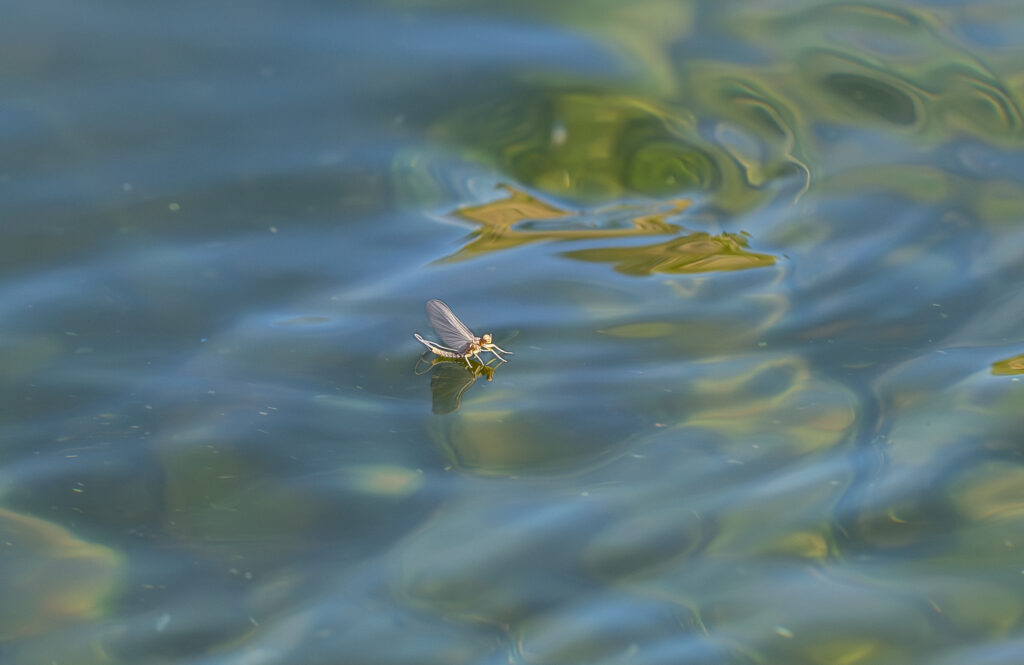
Why Entomology Matters on the Missouri
The Missouri isn’t a river where you blindly fish the water and hope. It’s technical, rewarding, and data driven. Trout here are wild, selective, and often keyed to very specific life stages, especially duns, cripples, and emergers. Anglers who understand what’s hatching, when, and how, will consistently use the net.
Primary Missouri River Hatches
This blog post will covers the key bugs that sustain trout from January to December. While timing can shift slightly year to year with flows and weather, these patterns repeat with surprising regularity.
1. Midges
- Peak: Year-round, strongest in late winter and early spring
- Size: #18–22 sometimes smaller
- Importance: Vital winter dry fly and nymphing hatch
Midges hatch daily, often in quiet pods near soft banks. They are the lifeblood of winter trout between Holter and Cascade.
2. Blue-Winged Olives (BWOs)
- Peak: April–May and again in October
- Size: #16–20
- Importance: Major spring and fall dry fly event
Cloudy, drizzly or snow days can be epic as these mayflies sit on the water longer waiting on their wings to dry. Expect pods of rising trout sipping emergers, cripples and spinners in the film.
3. Pale Morning Duns (PMDs)
- Peak: Mid-June through July
- Size: #16–18
- Importance: The marquee of summer Missouri River Hatches.
The PMD hatch defines summer dry fly fishing on the Missouri; trout get picky and demand accuracy.
4. Caddis (Tan, Black, Spotted Sedge)
- Peak: May–September
- Size: #14–18
- Importance: Evening dry fly magic
Swing soft hackles at dusk, or prospect dries down the flats.
5. Tricos
- Peak: July–September
- Size: #20–22
- Importance: Technical morning spinner fall
Fish concentrate on foam lines; accuracy and presentation become everything.
6. Terrestrials (Hoppers, Ants, Beetles)
- Peak: July–September
- Size: #8–16
- Importance: Summer hopper eats on windy afternoons
Blind-casting banks and shelves can yield trophy browns and rainbows.
7. Sow Bugs
- Peak: Year-round
- Size: #14–18
- Importance: Primary subsurface food source
Holter’s tailwater produces abundant sow bugs; essential for nymph rigs.
8. Scuds
Importance: High-protein staple
Pink, gray, or tan scuds imitate a protein-packed forage that trout crush.
Peak: Year-round, especially spring
Size: #12–16
Insect Life Cycle & Tactics
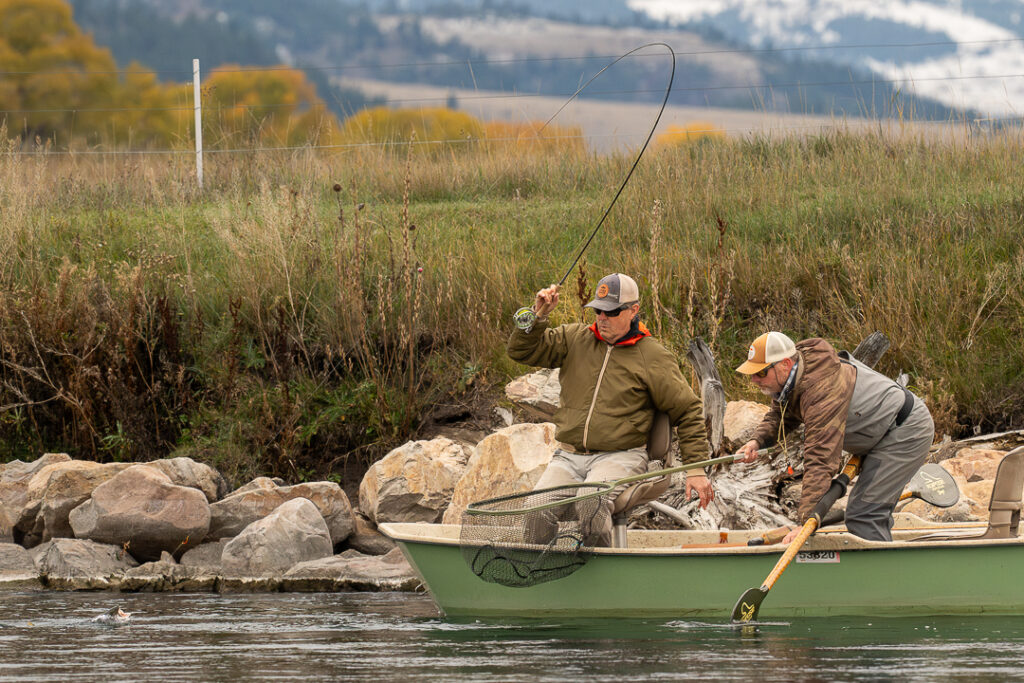
Midges – The Winter Lifeline
- Life Stage to Match: Pupa, Emerger, Cluster Dry
- Tactics: Light tippet (4x–5x), slow-water sippers, cluster patterns.
- Flies: Zebra Midge, Griffith’s Gnat, Buzzball, Parachute Adams.
BWOs – The Cloudy Day Hatch
- Life Cycle: Nymph – Emerger – Dun
- Presentation: Downstream dry fly drifts, fly first presentations.
- Flies: RS2, Film Critic, CDC Baetis Emerger, Parachute BWO, 401k Baetis.
Pale Morning Dun
- Life Stage: Cripple and Spinner most important.
- Water Type: Soft seams, back eddies, inside bends.
- Flies: PMD Cripple, Hi-Vis Spinner, Split-Case PMD, Smoke Jumper.
Caddis – Evening Explosions
- Life Stage: Pupa, down winged Adult
- Tactics: Longer leaders, Downstream fly first presentation.
- Flies: X-Caddis, CDC & Elk, Soft Hackle, Corn-fed Caddis.
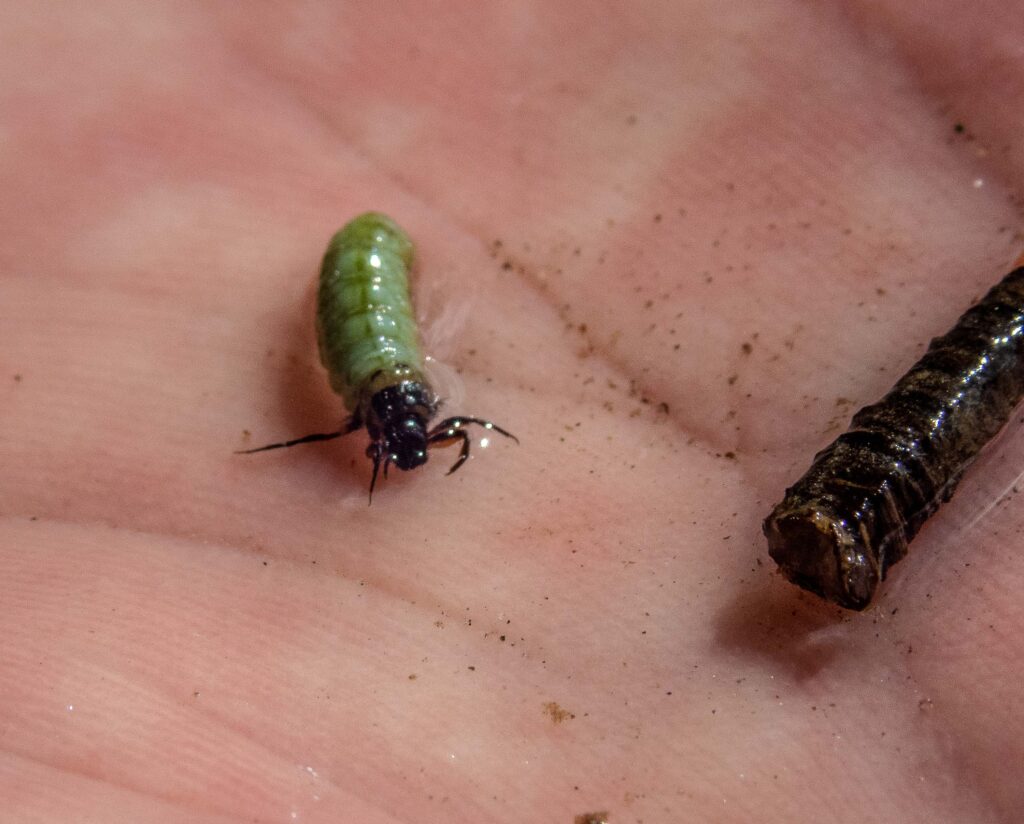
Tricos – The Spinner Game and Summer’s Selective Challenge
- Life Stage: Spinners
- Key Behavior: Pods of trout targeting spent Tricos in the film.
- Flies: Trico Spinner, Double Trico Cluster, Griffith Gnat.
Terrestrials – Ants , Beatles , Hoppers
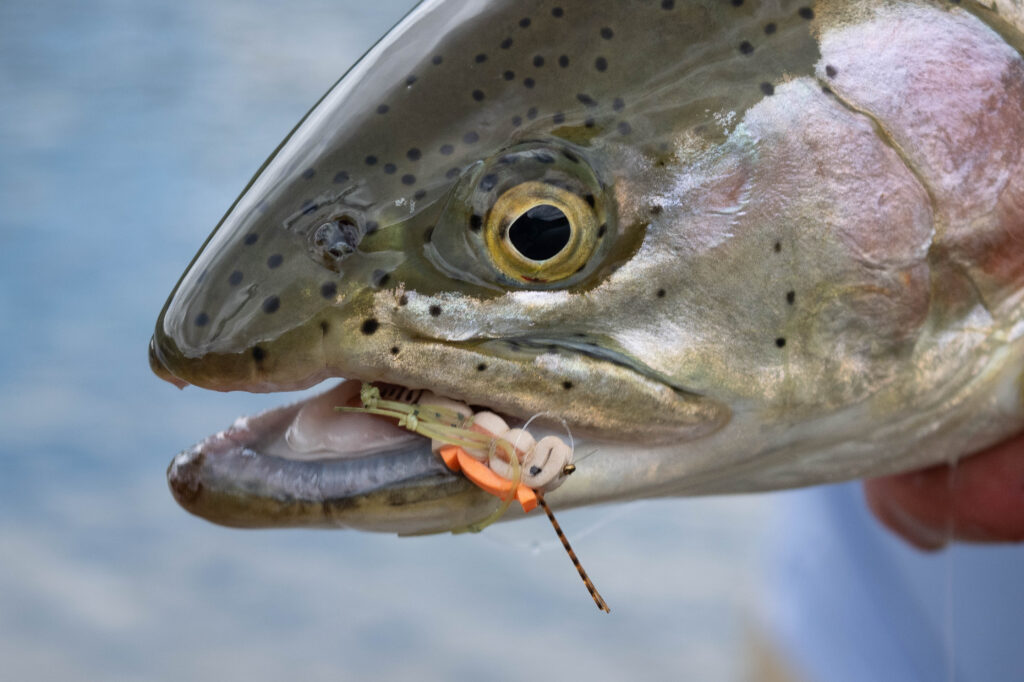
- Presentation: Banks, shelves, riffle drops
- Timing: 11 a.m.–4 p.m. on windy days
- Flies: Morrish Hopper, Hi-Vis Beetle, Ant Acid, Para-Ant.
Sow Bugs & Scuds – Subsurface Staples
- Techniques: Short-leash or deep nymphing.
- Flies: Ray Charles, Pink Lightning Bug, tailwater Sow, pink or grey Scud.
5. Essential Fly Box Checklist
Dry Flies & Emergents
- Parachute Adams (#14–20)
- CDC Baetis Emerger (#18–20)
- PMD Cripple (#14–16)
- Elk Hair Caddis (#14–18)
- Trico Spinner (#20–22)
- Hi-Vis Black Ant (#14–16)
- Clusters , Buzz Ball (#14-18)
- Hi-Viz Spinner (#14-18)
Nymphs
- Zebra Midge (#16–20)
- RS2 (#18–20)
- Split Case PMD (#16-18)
- Ray Charles (#14–16)
- Scud (#14–16)
- Frenchie (#14-18)
- Pheasant Tail (#14-18)
Terrestrials
- Morrish Hopper (#10–12)
- Ant Acid (#14)
- Water Walker (#10–12)
- Chubby – Purple , peach, Royal (#8-12)
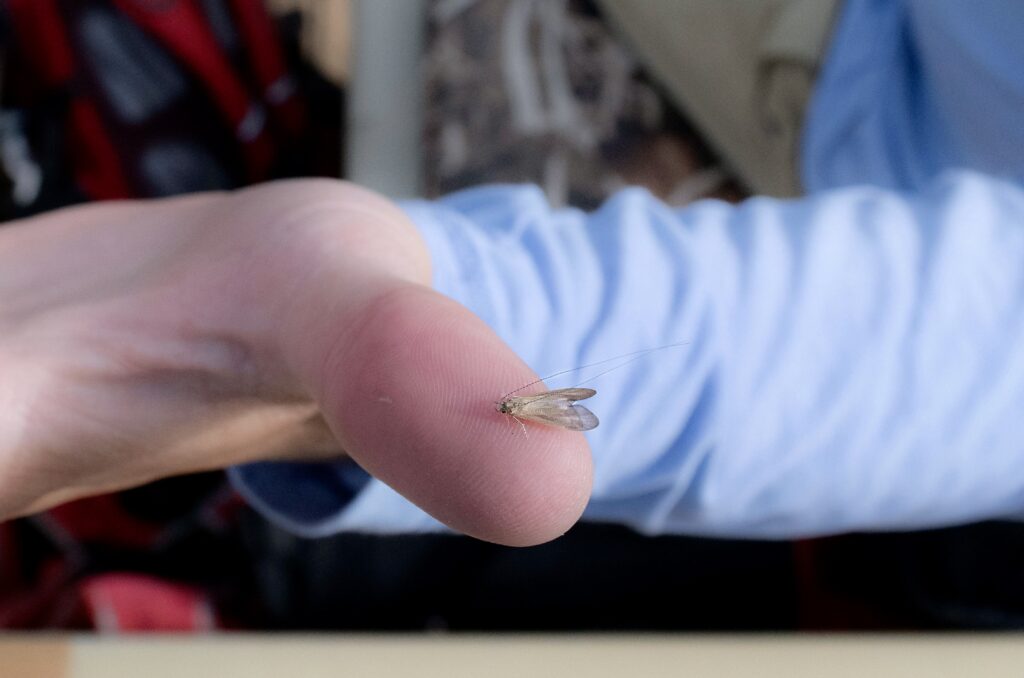
Tips for Missouri River Trout Behavior
Missouri trout often feed on emergers, cripples, and spinners. Fish low-riding CDC patterns and film flies. Target seams and back currents where insects gather. These conveyor belts concentrate bugs and fish. Especially during and after big hatches.
Think Depth and Shallow with Nymphs
A lot of fish hold in deeper water before a hatch. Adjust split shot and indicator depth based on the depth of water you are targeting. Once a hatch gets going a number of fish will move to shallower water, this is a great time to short leash nymph.
Presentation > Pattern
No fly, no matter how realistic, will fool a wary trout if it’s dragging across the surface or dragging unnaturally in the current. Presentation is everything. Focus on eliminating micro-drag, that subtle tension in your line or leader that causes the fly to move just slightly off pace with the current.
Final Thoughts
Missouri River’s hatches are more than just trout food. They’re a roadmap to success on the water. From midges to PMDs, reading the river and matching its insects can turn an ordinary day into an unforgettable one. Pay attention, be patient, and enjoy the River.
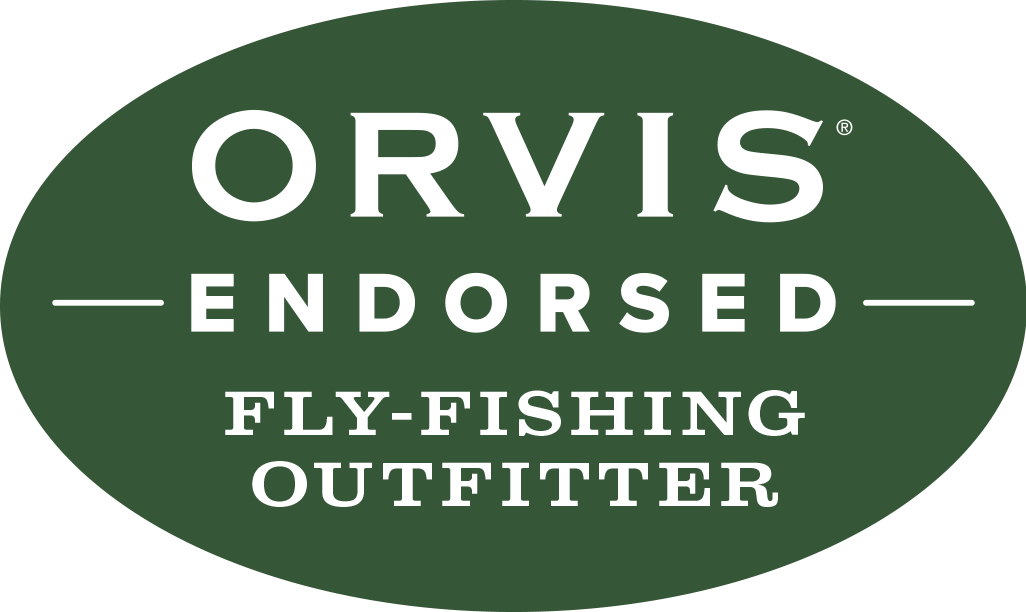
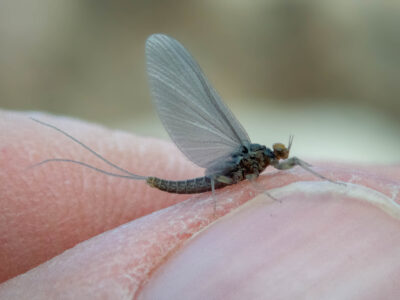
 Winter Fishing on the Missouri River
Winter Fishing on the Missouri River
Leave a Reply